Mortars Self-propelled mortar 2C4 "Tulip". The most of the most…
We paid a lot of attention stories mortar development. Like it or not, but today this type of weapon is one of the most deadly. Not potentially deadly as nuclear weapon, for example, but really deadly. It is no exaggeration to say that mortar fire takes away someone’s life or daily life.
Finishing up on this material about ordinary mortars and turning to reactive, we cannot but tell and show the very best. Mortar.
Our hero really inspires respect and fear with his own power to everyone who has ever seen the results of his work. A mortar that can destroy almost any fortification. A mortar that can fire high-explosive, cluster, guided, incendiary, neutron and nuclear mines.
Even, quite possibly, by some unknown ammunition.
Today we will talk about a beautiful spring flower that men give to their beloved spring. On 8 Martha.
Talk about a tulip. More precisely, about the "Tulip". On the self-propelled mortar of artillery of the High Command Reserve 2С4 "Tulip" caliber 240-mm. Designed for the destruction of fortified buildings, fortifications, accumulations of manpower and armored vehicles of the enemy, as well as the destruction of objects that due to high security cannot be destroyed by artillery of a smaller caliber.
When you see a funnel with a diameter of 10 meters and a depth of almost 6 meters, you really understand that this is a weapon! And this is not some special ammunition. This is a common mine. And an approximate view of the funnel arises in the head when working with special mines ... And the results of this work for the enemy ...
Where did this weapon miracle come from? And it appeared from the logic of the development of the Red Army in 1938 year! It was then adopted a promising program for the introduction of mortars in the Red Army. From the rifle company to the Reserve Command.
The complexity of the work on the mortar of the RGC was that the large (240-mm) caliber required completely new solutions even in such seemingly obvious things as aiming the mortar on the target, or loading. Agree, 16-kilogram mine for 120-mm mortar can be fully charged in the traditional way. And 130-kilo mine 240 mm? Yes to a height of more than 5 meters?
There was another difficulty. Purely practical. The war demanded the speedy production of not large-caliber, but mortar battalion and regimental managers. 82 mm and 120 mm. This is exactly the task that the Headquarters set for designers. A task that has been successfully solved. What we wrote in previous articles. And solved in many respects by the ingenious Soviet designer Boris Shavyrin.
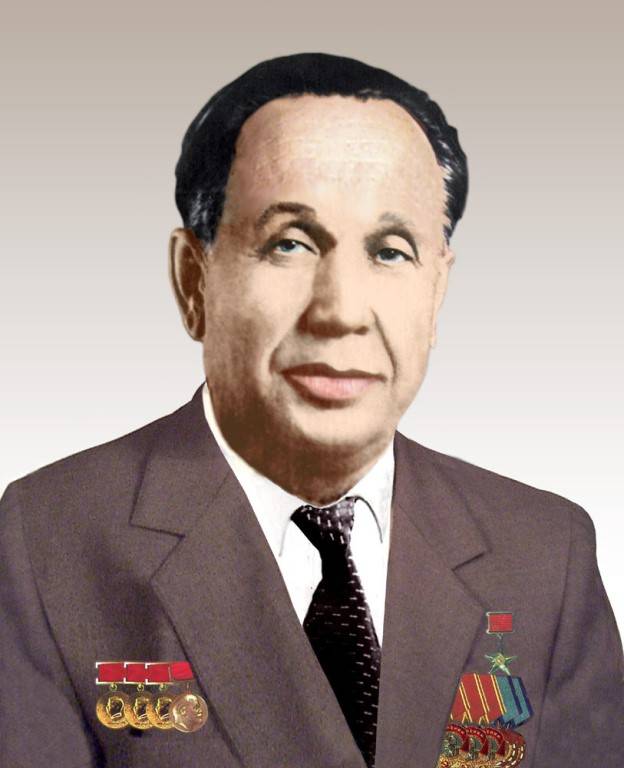
For five years, our designers tried to create a heavy-duty mortar. By the 1943, two prototypes of the 240-mm mortar were even created. But on trial, these mortars were not suitable for use. To put it bluntly, the test mortars "overwhelmed" completely.
And then the design and creation of an 240-mm mortar was commissioned to Boris Shavyrin. By this time he was the head of the Kolomna Special Design Bureau of smooth-bore artillery (SKBA). The famous designer abandoned the already used schemes and began work from scratch. Imagine, the work began in January 1944 of the year, and in the same year the factory started testing the new mortar!
At the end of the war, the leadership of the country believed that there was no urgent need for an 240-mm mortar, and the work was stopped. But in 1947, they returned to the topic. Mortar Shavyrina was sent for state tests. In the 1950, this mortar was adopted under the name M-240.
Unfortunately, the production of this mortar was stopped in the 1958 year. The reason is the same as for other representatives of the barrel artillery. The then head of state, N. Khrushchev, considered that such weapons were unpromising, and the future was for rockets. In total, 329 mortars were manufactured at plant No. 75 in the city of Yurga, Kemerovo Region.
But his war M-240 still found. In 1985 year in Afghanistan. In the autumn of 1984, the howitzer battery of the 1074 Artillery Regiment of the 108 Motorized Rifle Division was re-equipped with X-NUMX M-4 mortars. Soldiers and officers of the battery retrained in the Union. The first combat use of M-240 and “Daredevil” mines was in the area of the Charikar valley. Later M-240 were in the Pandzhsher Gorge, they beat the spirits Akhmat Shah Massoud. The effectiveness of the mortar hit. One, maximum two shots to destroy the target!
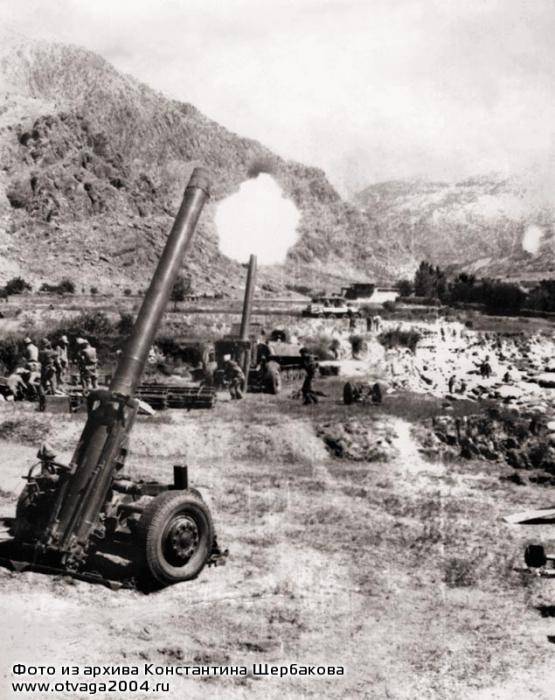
What is M-240? Consider carefully this mortar is a must. The fact is that it is the modification of this mortar under the designation 2B8 that makes up the artillery part of our “spring flower” - “Tulip”.
The 240-mm M-240 mortar is a rigid structure (without wheel chocks) on a wheeled carriage. It consists of the following parts: a barrel with a bolt, a frame with a shock absorber, a machine with guidance mechanisms, a balancing mechanism, booms with a mortar transfer mechanism from a traveling position to a combat position and back, a support plate, a king pin and sighting devices. in trunnion clips. Because of this, he has the ability to swing on the axles to bring in the position for loading.
Mortar with breech-loading circuit. When loading the mortar barrel "breaks". To close the barrel and transfer the force of recoil to the base plate, the breech serves. Its conical part is completed with a ball heel, with which the breech is connected to the bowl of the base plate.
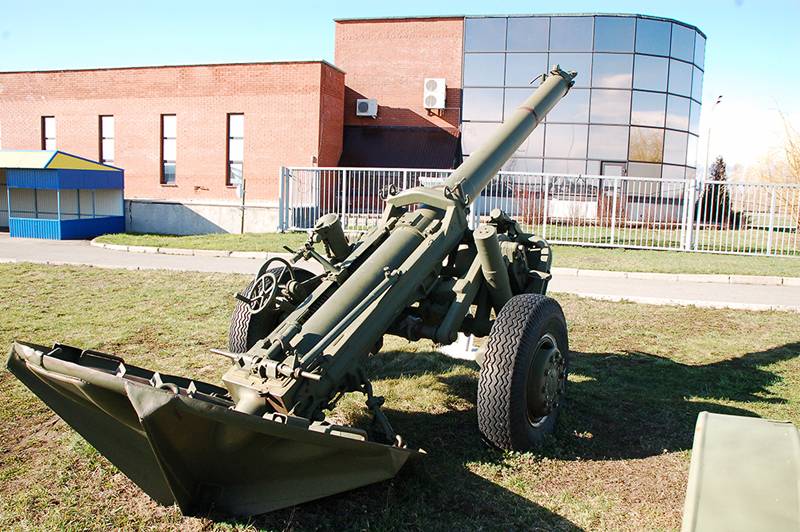
The machine consists of two frames (top and bottom) of a stamped and welded construction, hinged together. Swivel screw mechanism that allows horizontal guidance without moving the wheels. Since the recoil force is quite significant, and there are no recoil devices in the mortar, shooting at elevation angles greater than 45 ° is allowed only from solid ground and after several “shrinkage” shots.
The lifting mechanism of the screw type. The balancing mechanism is spring, located on the right side of the machine. The lower frame is assembled on the combat axle of the non-detachable wheel travel.
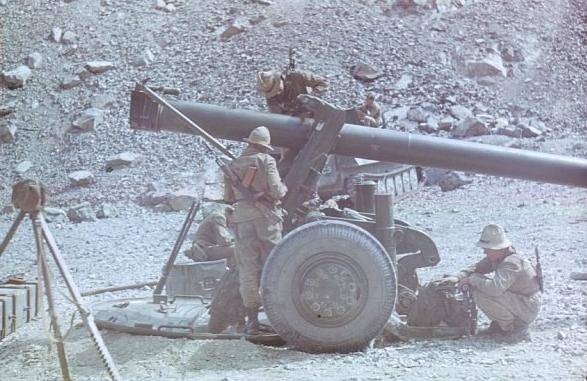
Suspension wheels spring. The wheels themselves - trolleybus type YATB-4, with spongy filler. The towing of the M-240 is done regularly by the AT-L tracked tractor, but other tractors may be used, as well as Ural and KamAZ trucks.
For the transport of mines in the firing position in the mortar kit included a special single-axle truck. Loading a mortar required a number of manipulations:
- The barrel is in a horizontal position;
- after the shutter is opened, a tray is hung on the axis of the wedge;
- five people calculating manually lift a mine from the cart, put it on the tray and send it to the barrel;
- the tray is removed, then the barrel is lowered into the breech for a shot.
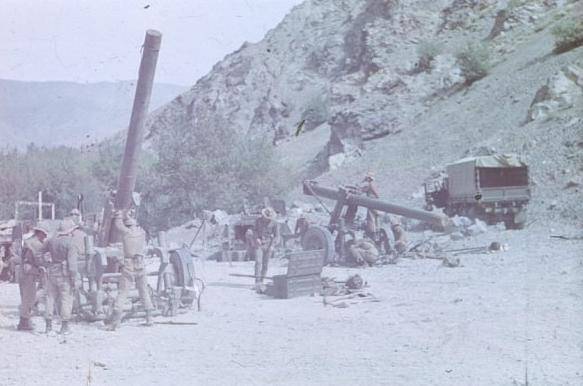
Basic mortar performance characteristics:
Weight, kg
in a combat position: 3610
in the stowed position: 4230
Dimensions:
length mm: 6510
barrel length, mm: 5340
width, mm: 2430
height, mm: 2210
Crew, prs: 11
Elevation angle, degrees: + 45 .... + 80
Angle of rotation
at elevation of 45: 16,5
at elevation of 80: 78
Rate of fire, rds / min: 1
Shooting range, m:
for F864: 800-9650
for 3Ф2: 19690
But how did the Tulip come about? Do not believe it, but the blame for the appearance of this handsome steel ... Americans! More precisely, the use of their American SAU in Vietnam. Unlike us, the Americans understood perfectly well that a global war is possible purely theoretically. But regional wars are real business. Therefore, they developed their own ACS. And Vietnam became the proving ground where these machines showed their efficiency and necessity.
The park of Soviet cars of this class on the western background looked very pale. SAU times of the Great Patriotic War were really not comparable with the new machines. Even those that were on the list of the best. MIS-152 or ACS-100 by that time were already inferior to American systems in many ways. And we, in the old Russian tradition, "rushed to catch up" with the West.
In July, a decree of the Central Committee of the CPSU and the USSR Council of Ministers on the development of new self-propelled artillery systems for the Soviet army was issued on 1967. The complexes were supposed to include not only the ACS, but the KSHM. Several factories at once obliged to develop and submit to the state tests new systems.
It is in this program and "hit" self-propelled heavy mortar. The development of this weapon was entrusted to the Ural Transport Engineering Plant in Sverdlovsk. But, realizing that the Uraltransmash was unable to completely solve the task on its own, the development of the artillery part of the mortar was assigned to the Special Design Bureau of the Perm Machine-Building Plant, which specialized in artillery systems.
Thus, the "Tulip" has two "dads" at once. Chief designer of the chassis G. S. Efimov and chief designer of the mortar 2B8 Yu. N. Kalachnikov.
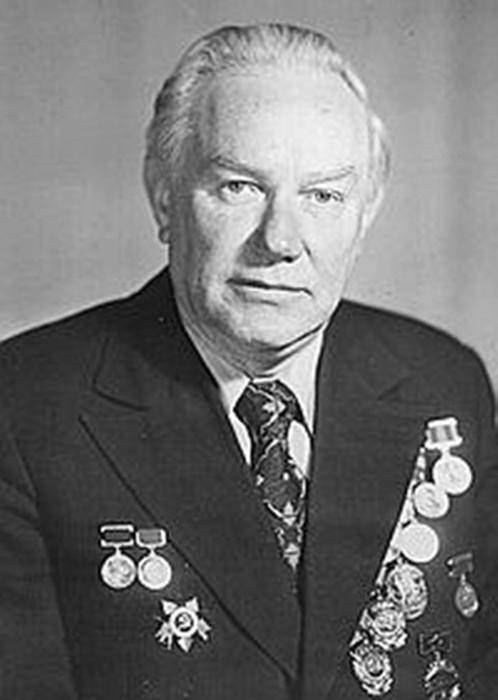

First, about the chassis. The chassis developed for the 2K11 “Circle” in the 1955-56 years was taken as the basis. However, already in the course of the design, it turned out that the chassis for the heavy mortar was "weak." Starting with the engine power (400 HP) and ending with the chassis itself.
As a result, in the final version no more than 20% of nodes and mechanisms remained in the final version. The rest were altered to meet the specific requirements of "Tulip" and howitzer "Acacia", in which the plant worked in parallel.
Installed the engine B-59U power 520 l. pp., which provided a speed of up to 63 km / h and cruising range in 500 km.
The car body is welded. With protection against armor piercing bullets caliber 7,62 mm and splinters. A dozer blade was installed in front of the equipment position.
Functionally, the body is divided into three parts.
Branch management is traditionally for armored vehicles, left-front of the center of the hull. The engine compartment is on the right. The middle and aft parts of the corps are given to the fighting compartment.
In the center is the ammunition in a mechanized drum-type ammunition for 20 minutes and a min. Feed mechanism.
In the middle part is the mines feed hatch during loading. On each side there are hatches for landing crew. In the stern of the hull is mounted the mortar itself.
The 2B8 mortar itself is not very different from the M-240. With the exception of the use of hydraulics that has become possible in the "engine version". Now vertical guidance is provided by a hydraulic mechanism, horizontally - by hand.
Hydraulics also provides for transferring the mortar from the marching position to the combat position and vice versa, removing the barrel to the mine filling line, opening the bolt, feeding the mine from the mechanized pack to the delivery rails (located on the top of the machine body), loading the mortar, closing the bolt and lowering the barrel to the chest.
It should be noted that the birth of "Tulip" was difficult. In the factory tests, the first three prototypes showed quite good results. But on state tests in 1969, there was an incident in the production of shots.
The first experimental sample at the “Rzhevka” test site withstood only two shots. The attachment of the support plate, which rigidly connected it to the machine body, burst. A dynamic wave in an accordion crumpled fuel tanks. I had to urgently change the design of the mount.
This did not prevent the 1971 from adopting the 240-mm self-propelled artillery mortar of the RVK 2-XNNUMX Tulip into service. And since 4, the company has received an order for the production of 1972-x first machines. In total, until 4, when production was discontinued, about 1988 Tulips was released. We specifically use the word "about" as the quantity varies somewhat from one source to another.
Speaking of "Tulip", you can not bypass the theme used by the complex ammunition. Naturally, such weapons could not be used only for firing conventional, classical, ammunition. Talking about M-240, we mentioned the weight of an ordinary mine for this mortar. Just over 130 kilograms. But the range of such mines and less than 10 kilometers.
For Tulip, a special active-reactive mine, 3Ф2, was developed. Ammunition, equipped with a rocket engine! This naturally dramatically increased the weight and length of the mines. Weight increased to 228 kg! And, accordingly, the number of mines in the ammunition decreased. Up to 10 pieces. But the range! 19 more than miles!
There are also "flower surprises". Nuclear mine 3B4 and its reactive version (of the type 3F2) 3B11, with a range of 18 kilometers. A "in store" is still "Sayda", equipped with napalm and burning out everything around you on the square 7850 square. meters There is also a "Nerpa" cassette mine with fragmentation-high-explosive elements 3ОФ16. There are neutron shells "Resin" and "Fata."
But, in our opinion, the 3WF "Smeltak" adjustable mine is the most interesting for consideration. The one used by the 1074 AP 108 MSD gunners in Afghanistan.
The name "adjusted mine" refers only to the ammunition itself. It is more correct to talk about the 1K113 guided weapons complex, which was put into service in the 1983 year. And the complex, in addition to mines, also includes a laser rangefinder-pointer 1Д15 or 1Д20.
For accurate shooting, it is enough to install the target designator at a distance from 200 to 5000 meters. Without going into technical nuances, the target designator works 0,1-0,3 seconds. This is enough to correct the mines. Even for complex purposes, the “backlight” lasts no more than 3 seconds. At the same time, the probability of hitting a mine in a circle with a diameter of 2-3 meter is 80-90%. And at the very beginning of the article, we described the impressions of the crater after the explosion of an ordinary mine from the Tulip.
Today, to see "Tulip" in parts and compounds is rather complicated. Most of these weapons are preserved. But sometimes, quite unexpectedly, "Tulips" "appear." How did this happen, for example, in the Donbas?
6 July 2014, the militia reported on the use of "Tulips" of the Armed Forces of Ukraine in the villages of Cherevkovka and Semenovka. Video recordings of these attacks can still be found on the Internet. And, as often happens in Ukraine, on August 15, the DPR militia, commanded by Bezler, seized several artillery installations, including the Tulip, during a raid to the rear of the Ukrainian Armed Forces.
Soon the militia used this mortar. Probably, many people remember the cries from Kiev about the supply of prohibited weapons from Russia. And the statement by the Minister of Defense of Ukraine about the testing of the Tulip in the east of the country ... Galatei then explained the departure from the airport precisely by the appearance of the Tulip there.
Finishing the story about the most powerful mortar that now exists in the world, I would like to express admiration to the designers, engineers, technicians, and workers who were able to create such weapons.
And the life of 2C4 "Tulip" is not over. And for a long time is over. Since last year, those mortars that are in service, began to modernize. And this is the best indicator of the need of this weapon both today and tomorrow ...
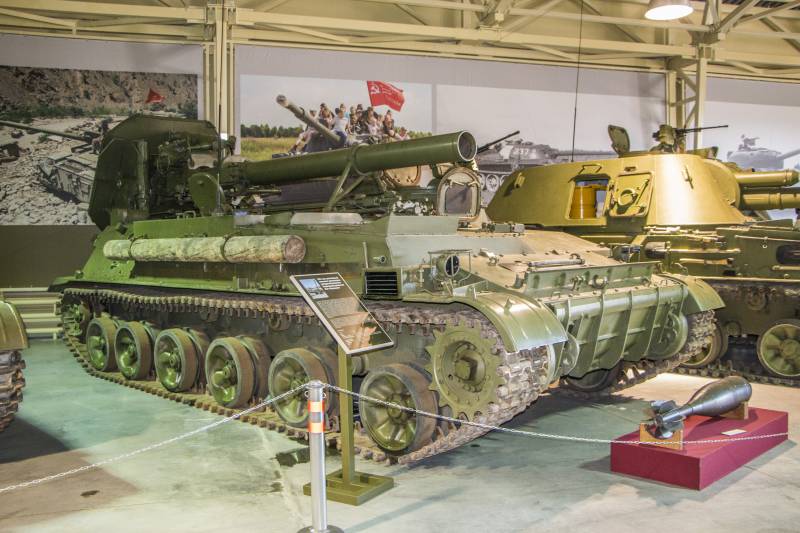
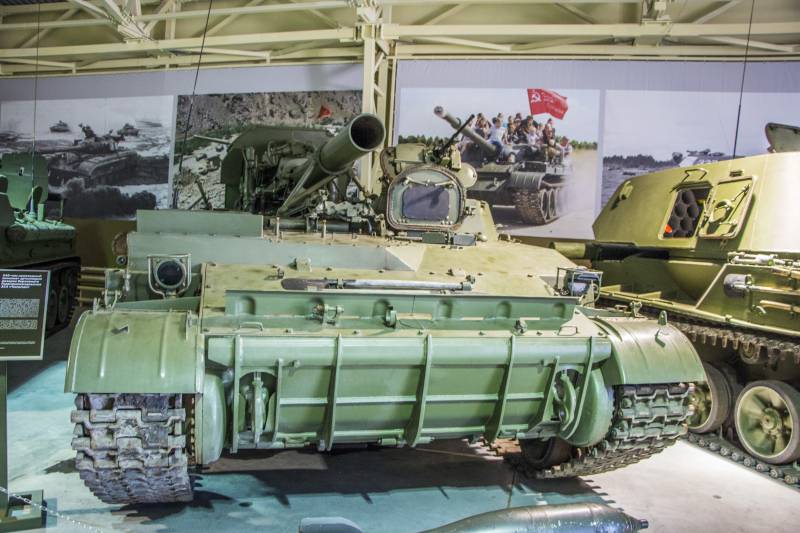
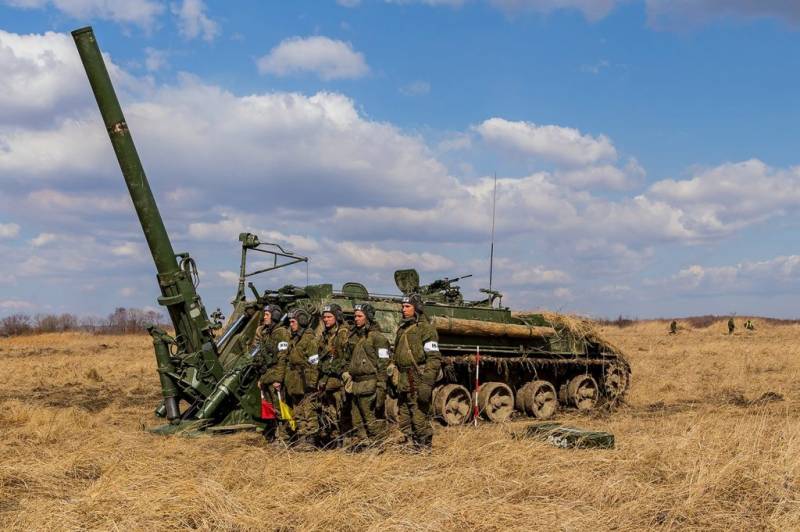

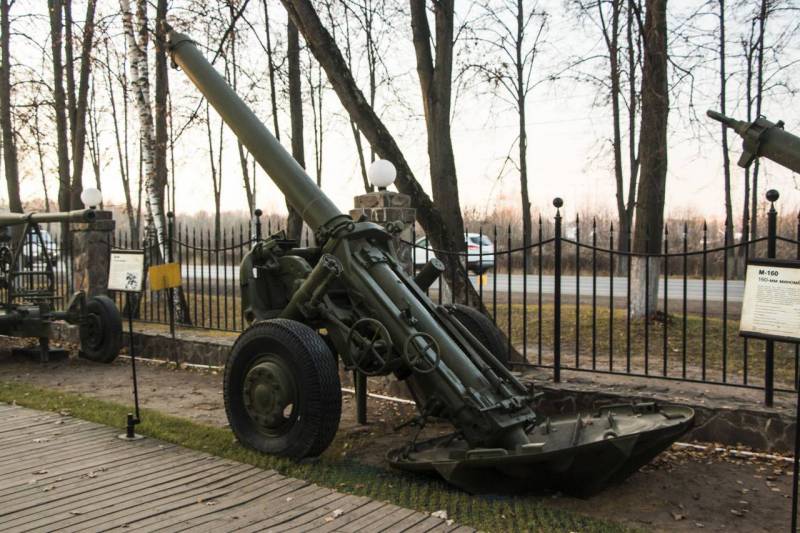
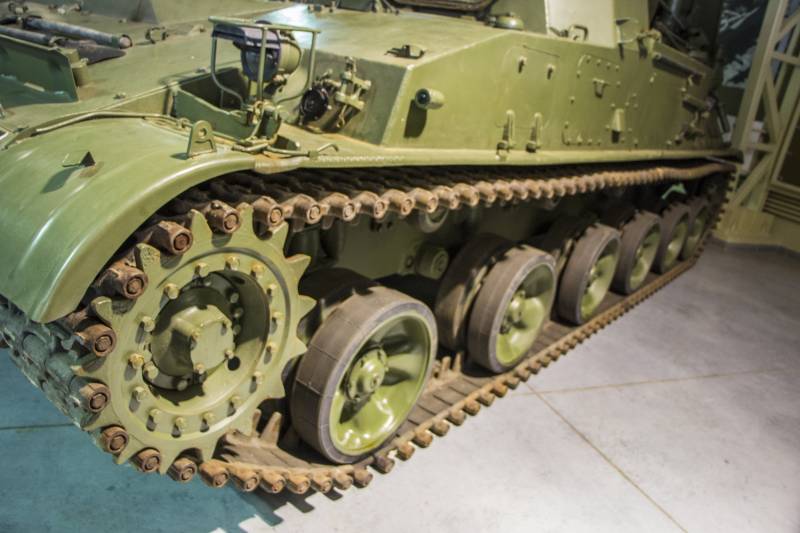
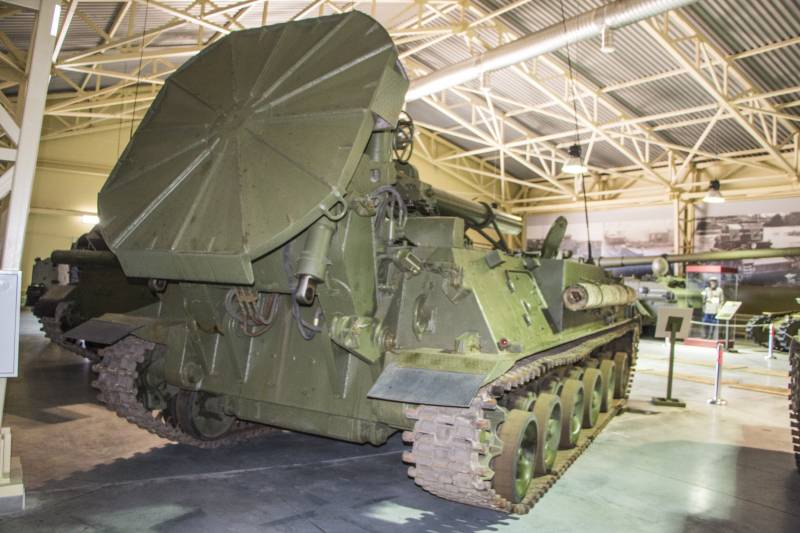
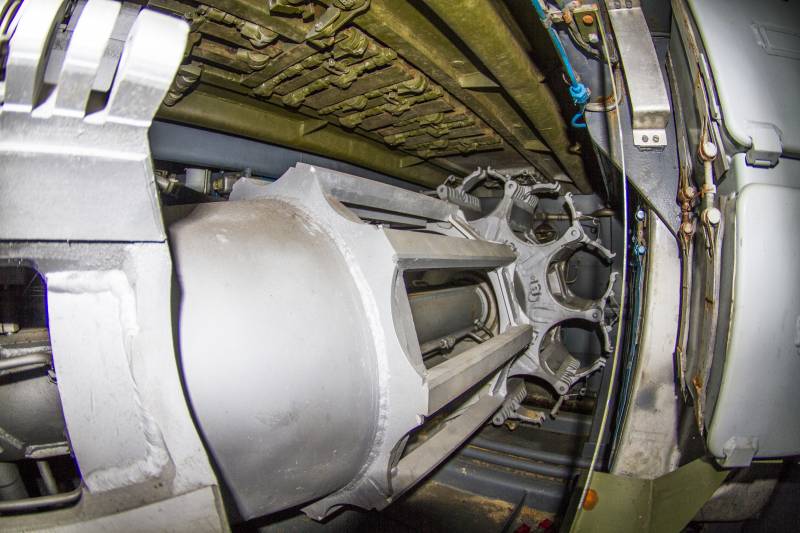
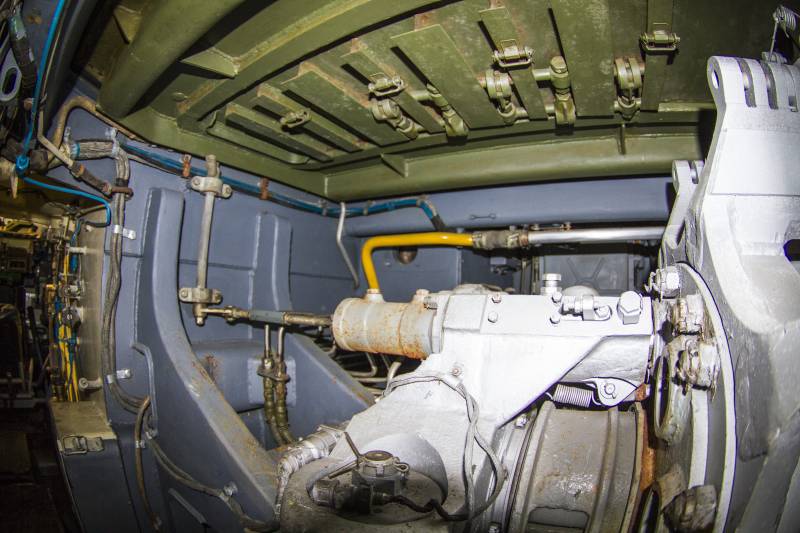
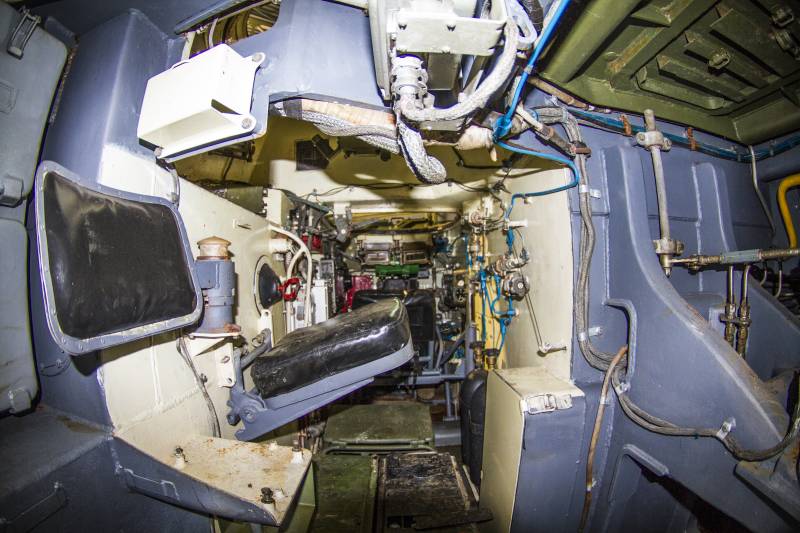
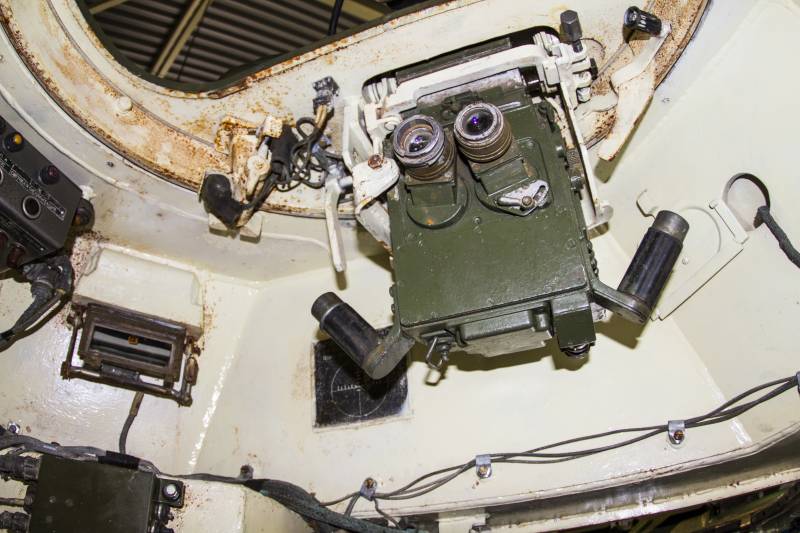
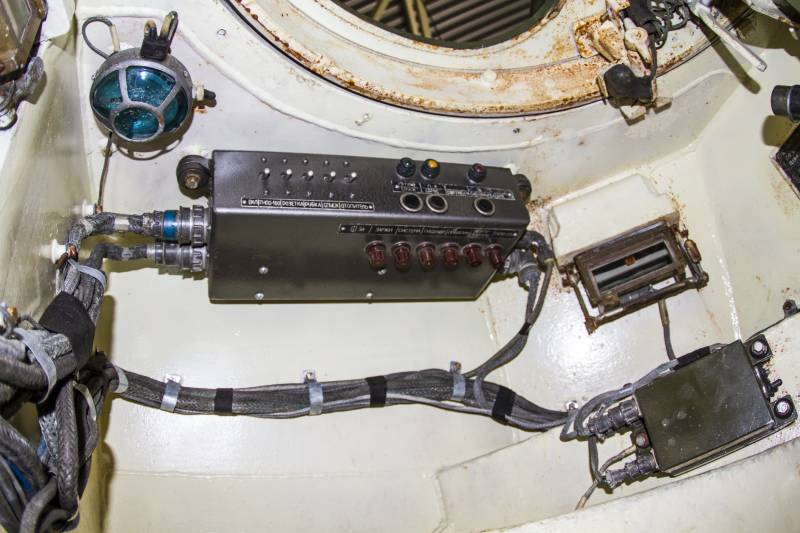
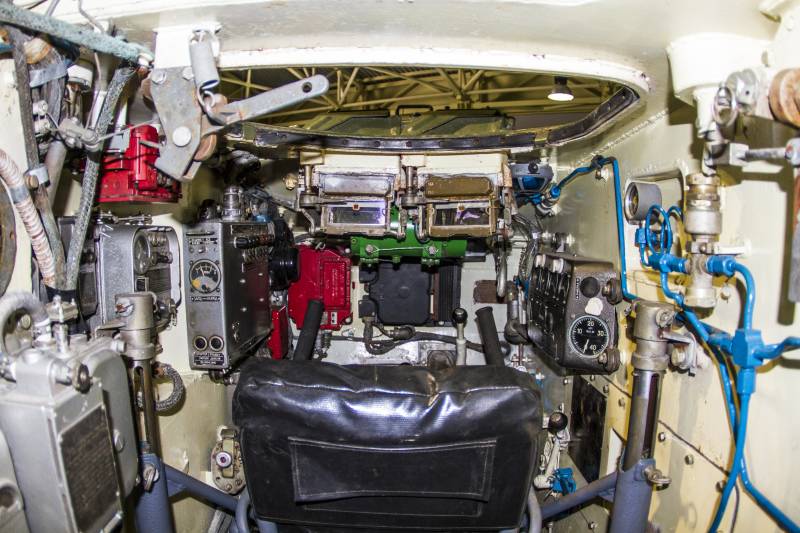
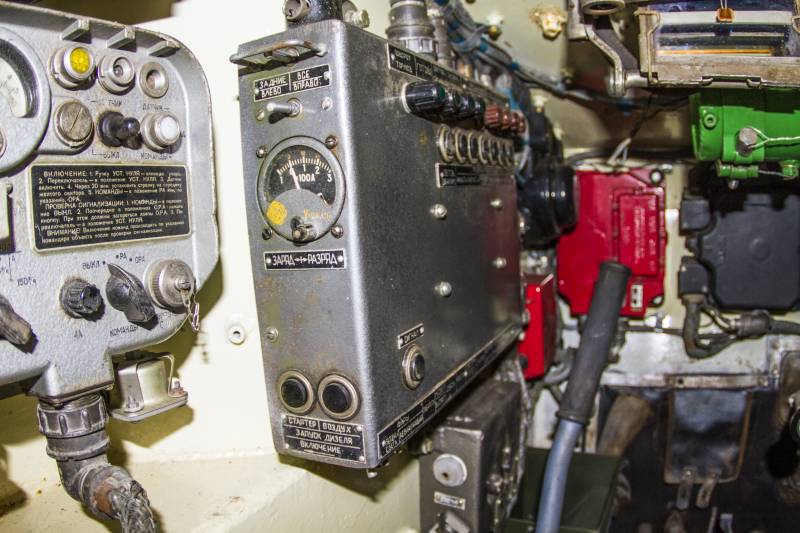
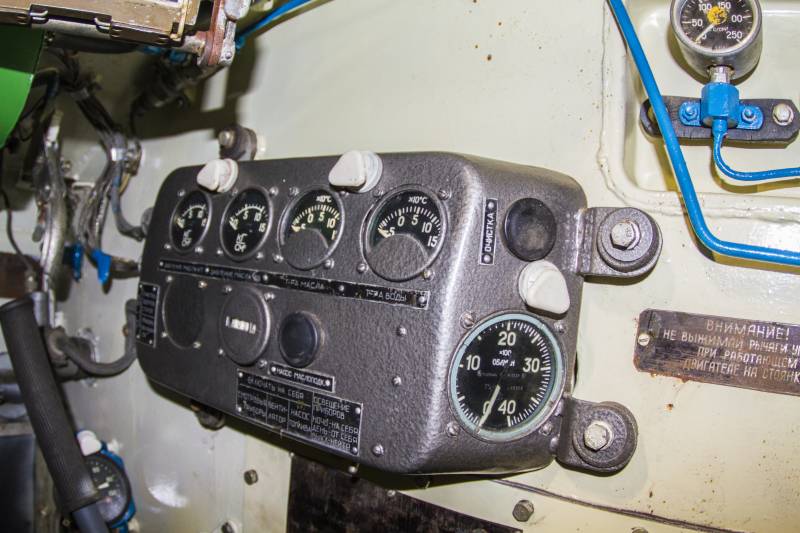
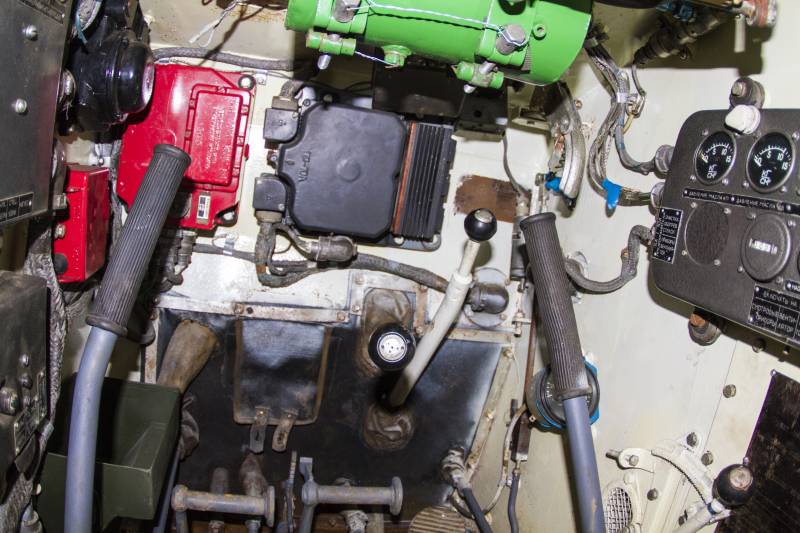
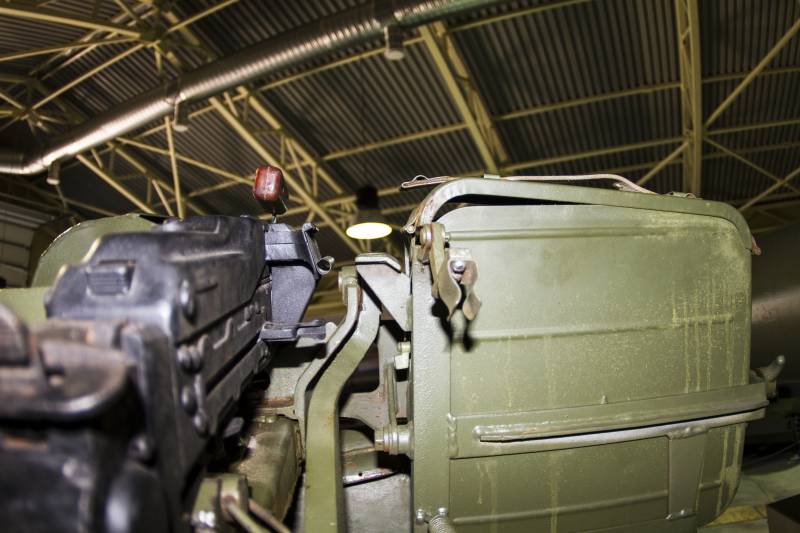
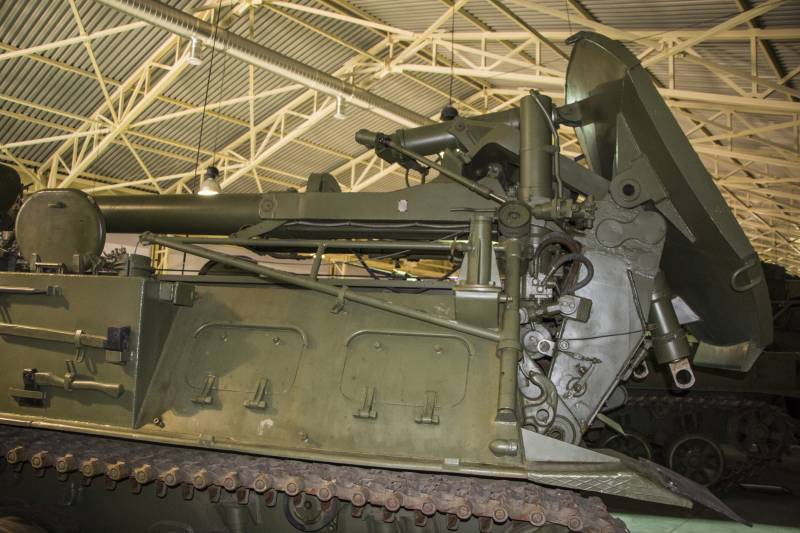
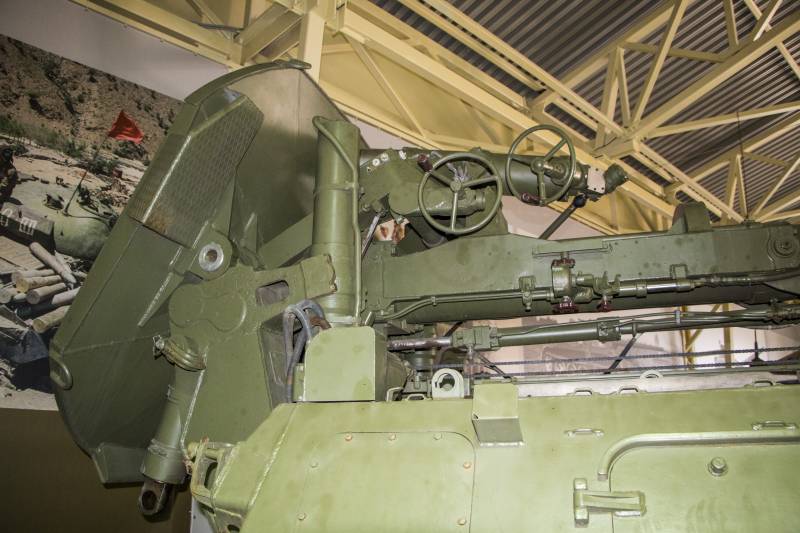
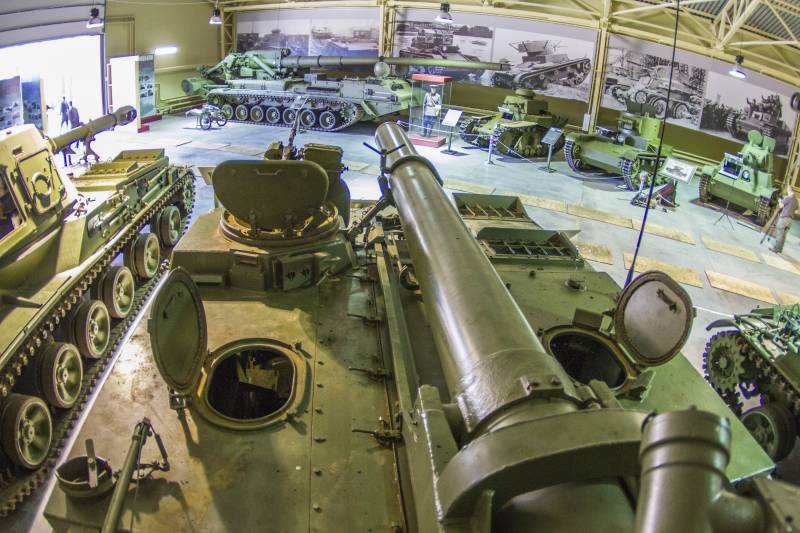
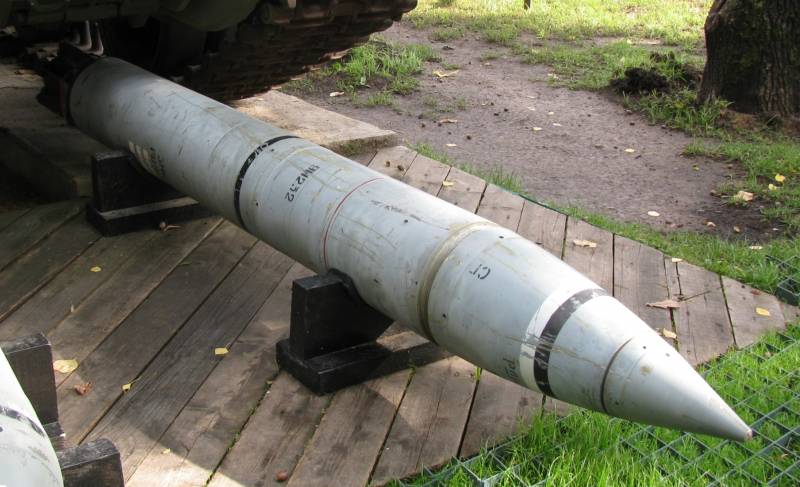
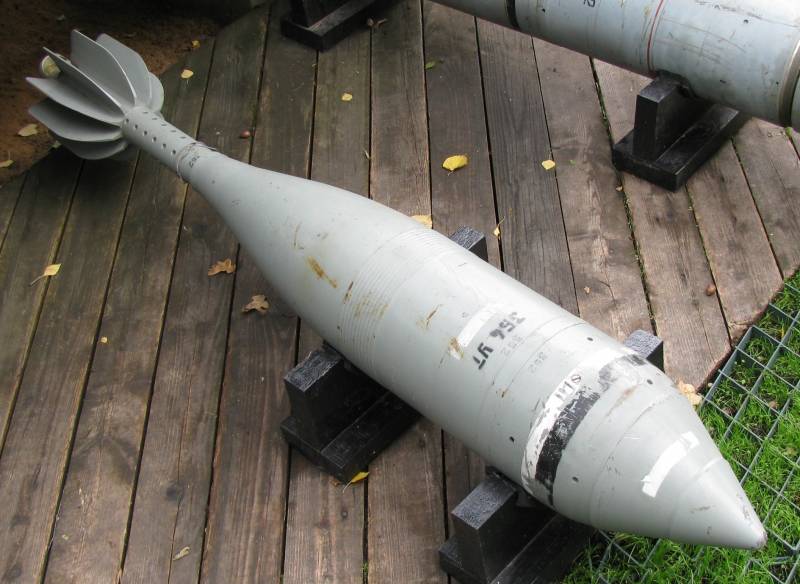
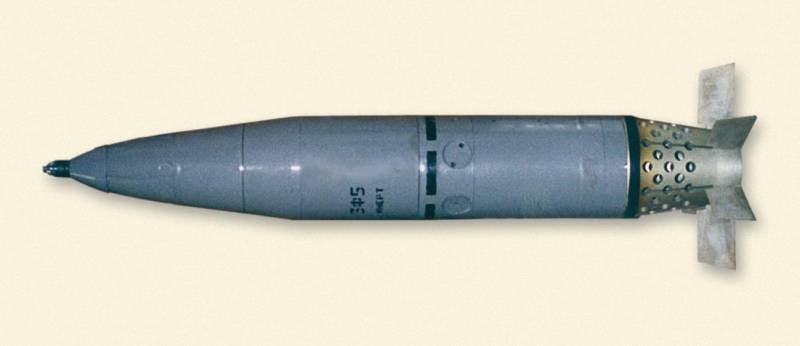
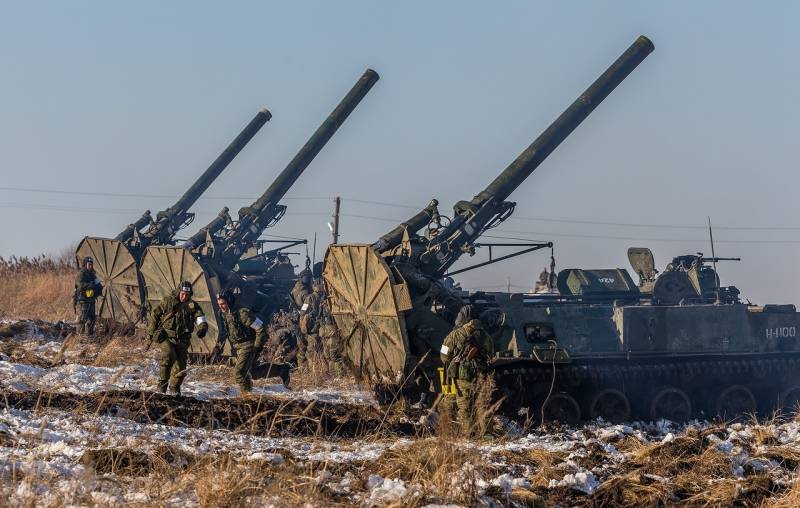
Information